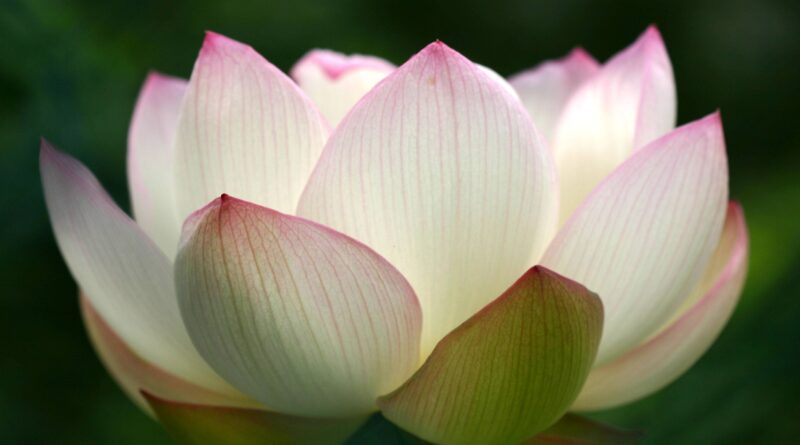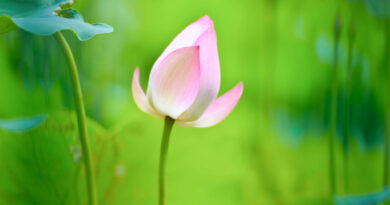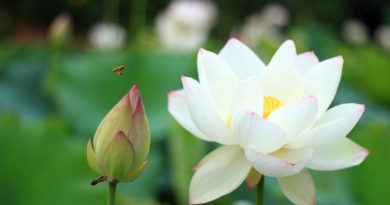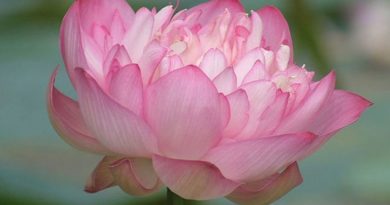25. The Monk (bhikkhuvaggo)
MAIN CONTENT
25. The Monk
(Bhikkhuvaggo)
360. Good is restraint over the eye; good is restraint over the ear; good is restraint over the nose; good is restraint over the tongue.
361. Good is restraint in the body; good is restraint in speech; good is restraint in thought. Restraint everywhere is good. The monk restrained in every way is freed from all suffering.
362. He who has control over his hands, feet and tongue; who is fully controlled, delights in inward development, is absorbed in meditation, keeps to himself and is contented — him do people call a monk.
363. That monk who has control over his tongue, is moderate in speech, unassuming and who explains the Teaching in both letter and spirit — whatever he says is pleasing.
364. The monk who abides in the Dhamma, delights in the Dhamma, meditates on the Dhamma, and bears the Dhamma well in mind — he does not fall away from the sublime Dhamma.
365. One should not despise what one has received, nor envy the gains of others. The monk who envies the gains of others does not attain to meditative absorption.
366. A monk who does not despise what he has received, even though it be little, who is pure in livelihood and unremitting in effort — him even the gods praise.
367. He who has no attachment whatsoever for the mind and body, who does not grieve for what he has not — he is truly called a monk.
368. The monk who abides in universal love and is deeply devoted to the Teaching of the Buddha attains the peace of Nibbana, the bliss of the cessation of all conditioned things.
369. Empty this boat, O monk! Emptied, it will sail lightly. Rid of lust and hatred, you shall reach Nibbana.
370. Cut off the five, abandon the five, and cultivate the five. The monk who has overcome the five bonds is called one who has crossed the flood. 1
371. Meditate, O monk! Do not be heedless. Let not your mind whirl on sensual pleasures. Heedless, do not swallow a red-hot iron ball, lest you cry when burning, “O this is painful!”
372. There is no meditative concentration for him who lacks insight, and no insight for him who lacks meditative concentration. He in whom are found both meditative concentration and insight, indeed, is close to Nibbana.
373. The monk who has retired to a solitary abode and calmed his mind, who comprehends the Dhamma with insight, in him there arises a delight that transcends all human delights.
374. Whenever he sees with insight the rise and fall of the aggregates, he is full of joy and happiness. To the discerning one this reflects the Deathless. 2
375. Control of the senses, contentment, restraint according to the code of monastic discipline — these form the basis of holy life here for the wise monk.
376. Let him associate with friends who are noble, energetic, and pure in life, let him be cordial and refined in conduct. Thus, full of joy, he will make an end of suffering.
377. Just as the jasmine creeper sheds its withered flowers, even so, O monks, should you totally shed lust and hatred!
378. The monk who is calm in body, calm in speech, calm in thought, well-composed and who has spewn out worldliness — he, truly, is called serene.
379. By oneself one must censure oneself and scrutinize oneself . The self-guarded and mindful monk will always live in happiness.
380. One is one’s own protector, one is one’s own refuge. Therefore, one should control oneself, even as a trader controls a noble steed.
381. Full of joy, full of faith in the Teaching of the Buddha, the monk attains the Peaceful State, the bliss of cessation of conditioned things.
382. That monk who while young devotes himself to the Teaching of the Buddha illumines this world like the moon freed from clouds.
End Notes
1 The five to be cut off are the five “lower fetters”: self-illusion, doubt, belief in rites and rituals, lust and ill-will. The five to be abandoned are the five “higher fetters”: craving for the divine realms with form, craving for the formless realms, conceit, restlessness, and ignorance. Stream-enterers and Once-returners cut off the first three fetters, Non-returners the next two and Arahats the last five. The five to be cultivated are the five spiritual faculties: faith, energy, mindfulness, concentration, and wisdom. The five bonds are: greed, hatred, delusion, false views, and conceit.
2 Aggregates (of existence) (khandha): the five groups of factors into which the Buddha analyzes the living being — material form, feeling, perception, mental formations, and consciousness.
</h2?translated>







